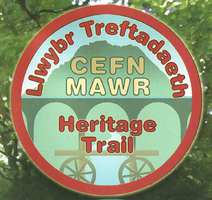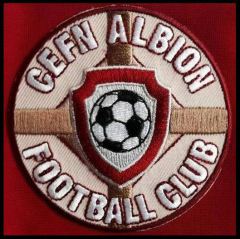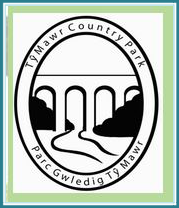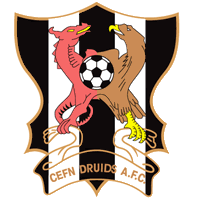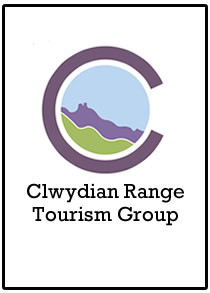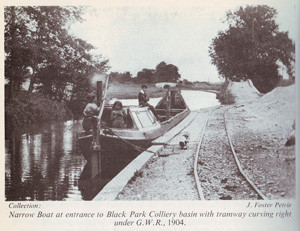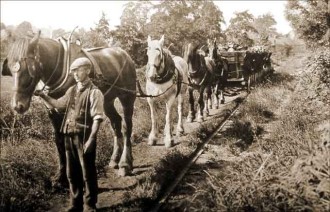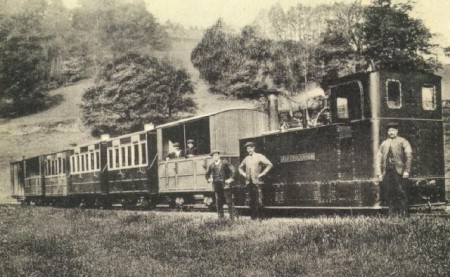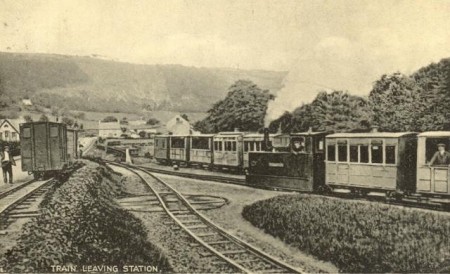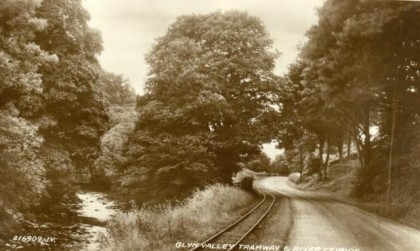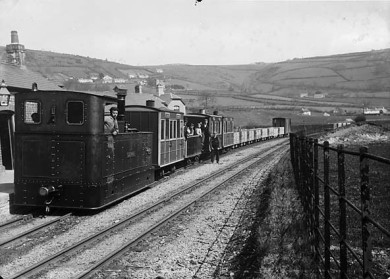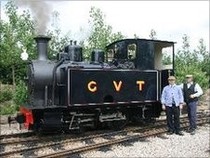Glyn Valley Tramway
The Glyn Valley Tramway once served the Slate and Granite Quarries and Communities of the Ceiriog Valley, one of the most beautiful Valleys in Wales. The tramway originally connected the quarries in the valley to the Shropshire Union Canal (now Llangollen Canal) at Chirk for the export of materials along the canal. This was originally by horse drawn trams before the age of steam and the coming of the railways in the 1850s.
When the main GWR line was laid running from London to Birkenhead via Birmingham the transfer of materials was eventually switched to the railway rather than the canal. This also resulted in small steam engines being used for the narrow gauge Glyn Valley Tramway, which continued in service connecting the Glyn Ceiriog Valley with the new railway line at Chirk.
The Glyn Valley Tramway was the spur to trade and economic prosperity of the Ceiriog Valley. Its quaint trains, puffing sturdily up the valley, brought in passengers, mails and the essentials for community life; in return, the trains took away the mineral wealth of the area to pave the streets of growing towns and cities and the construction of roads that, ultimately, rendered the little line redundant.
Within the Valley community, the Tramway was the key to employment and prosperity – a spur to the very development and progress that finally rendered it obsolete. It is therefore understandable that “The Tram” is remembered with affection throughout the Valley and occupies a central place in the broad tapestry of the local heritage.
After 62 years since closure in 1950, it is surprising how much of the old Tramway still remains. While most of its track bed alongside the Valley road (B4500) has disappeared as a result of road widening, traces of the route are apparent near Chirk, at Dolywern and above Glyn Ceiriog, where part of the track is now a public footpath.
In life, the Glyn Valley Tramway was certainly unusual. In ‘death’ it has proved to be unique. Almost no other abandoned narrow-gauge line can claim, over 60 years after its closure, to command such widespread interest. It is quite remarkable that a line, virtually ignored when it was operating, can today generate interest and enthusiasm sufficient to sustain active research, through its own “preservation” groups and countless scale models both at home and abroad.
Fortunately there are now two groups seeking to preserve what is left of the Glyn Valley Tramway and hopefully restore it to a functional line. This would be in much preference to any further increases with road widening and subsequent car parks at Glyn Ceiriog or other locations that would only detract from the beauty of this valley.
There is the:
- Glyn Valley Tramway Trust www.thegvt.org who can be written to at:
- 1 Mountain View, Chirk Green Road, Chirk, Wrexham LL14 5NR
- Or by email: contactus@glynvalleytramway.co.uk
And then there is:
- The Glyn Valley Tramway Group www.glynvalleytramway.org.uk
- The Old Tramway Engine Shed, New Road, Glyn Ceiriog, Llangollen, LL20 7HE
- Or by email: secretary@glynvalleytramway.org
The PKC Group hopes that one day these two groups will be successful in restoring the Glyn Valley Tramway and can perhaps meet in the middle. We would also recommend that the WCBC take the aims of the Glyn Valley Tramway Restoration associations into account in their forward planning for the area. The restoration of the Glyn Valley Tramway would provide the required additional tourist capacity without detracting from the scenic value of the valley, where as the additional parking and further road widening as indicated in the current WCBC DMP Destination Management Plan (Draft) July 2012 would.


